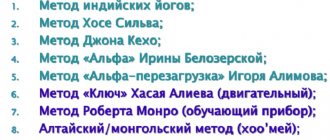| Tick-borne encephalitis | |
| The tick is a carrier of encephalitis. Dermacentor silvarum , male. | |
| ICD-10 | 84. |
| ICD-9 | 063063 |
| ICD-O | 23456789 |
| DiseasesDB | 29274 |
| MeSH | D004675 |
Tick-borne encephalitis
(spring-summer tick-borne meningoencephalitis) is a natural focal viral infection characterized by fever, intoxication and damage to the gray matter of the brain (encephalitis) and/or the membranes of the brain and spinal cord (meningitis and meningoencephalitis). The disease can lead to persistent neurological and psychiatric complications and even death of the patient.
According to statistics, six ticks out of a hundred are carriers of the virus (at the same time, from 2 to 6% of bitten people can get sick from an infected individual)[1].
Content
- 1 Historical background
- 2 Etiology and epidemiology
- 3 Pathogenesis
- 4 Pathomorphology
- 5 Clinical picture
- 6 Diagnosis 6.1 Differential diagnosis 6.1.1 Lyme disease
- 6.1.2 Poliomyelitis
- 6.1.3 Flu
- 6.1.4 Meningitis
Incubation period
It is generally accepted that from the moment the virus enters the blood until the first manifestations of the disease begin, from 1 day to a month passes. On average, the period is 1-3 weeks, since the forms of development of the disease are different.
- Lightning fast. With it, the initial symptoms appear already on the first day.
- Lingering. In this case, the duration of the incubation period can be about a month, sometimes even a little longer.
It should be noted that sometimes the disease is asymptomatic. Rarely, there are cases when an infected person does not develop tick-borne encephalitis.
Historical reference
The first clinical description was given by Russian researcher A.G. Panov in 1935.
In 1937-1938 complex expeditions of L. Zilber, E. N. Pavlovsky, A. Smorodintsev and other scientists studied in detail the epidemiology, clinical picture and prevention of this disease. During the expedition, it was established that in the Far East, outbreaks of encephalitis occur in early spring, when blood-sucking insects are not yet flying, but forest ticks are already crawling out of their winter shelters. The expedition members planted hungry ticks on mice, which later showed signs of encephalitis—paralysis[2].
The tick-borne encephalitis virus was first isolated in 1937 by L. Zilber and his colleagues from the brains of the dead, the blood and cerebrospinal fluid of patients, as well as from ixodid ticks and wild vertebrates of the Far East.
Diagnostic methods: laboratory blood tests and tick examination
To establish whether a tick is infected with the tick-borne encephalitis virus, it is necessary to deliver it alive to a laboratory for examination (available in every city as part of an infectious diseases hospital). It makes no sense to donate blood on the day of the bite to check whether the virus has entered the body.
The genetic material of the pathogen by producing many copies of it in a test tube (polymerase chain reaction or PCR) with blood can be detected no earlier than ten days later.
When does the body begin to produce antibodies?
It takes the body two weeks to recognize a foreign object (antigen) and create a specific means of defense - antibody proteins. They will be detected in the blood by an enzyme-linked immunosorbent assay (ELISA). Typically, blood is donated for this study at intervals of two to three weeks (paired serum method). At the moment of the first contact with the virus, large class M antibodies are formed, designed to directly remove the foreign object from the body. The number of class G antibodies, which are five times smaller in mass, indicates that an infection was once suffered.
Decoding the antibody test: what result is normal - table
| Immunoglobulin class | Title value | Parameter value |
| Ig M | 0–10 units/ml | There is no current encephalitis. |
| Ig M | > norms 4 times or more | Current infectious process. |
| Ig G | 0–10 units/ml | There is no immunity (including after vaccination) to encephalitis. |
| Ig G | > norms 4 times or more | There is immunity to the disease (after an infection or vaccination). |
Differential diagnosis
Differential diagnosis is carried out with the following conditions:
- a similar disease of a different infectious nature;
- poliomyelitis caused by poliovirus;
- neoplasm of the brain and spinal cord;
- acute circulatory disorder.
Etiology and epidemiology
Distribution of tick-borne encephalitis
The tick-borne encephalitis virus is neurotropic, RNA-containing. Belongs to the genus Flavivirus
, belongs to the family
Flaviviridae
of the ecological group of arboviruses.
The pathogen is capable of maintaining virulent properties for a long time at low temperatures, but is not resistant to high temperatures (it dies in 2-3 minutes when boiled), disinfectants and ultraviolet radiation. The main reservoir supporting the existence of the pathogen are ixodid ticks - Ixodes persulcatus
(mainly in the Asian region of Russia) and
Ixodes ricinus
(mainly in the European region). Traditional areas of distribution of tick-borne encephalitis are Siberia, the Urals, and the Far East. At the same time, cases of infection are also found in central Russia, the North-Western region, and the Volga region. The natural reservoir of the virus and its source are more than 130 species of various warm-blooded wild and domestic animals and birds, in particular wild ungulates[3][4]. Ticks become infected from animal carriers of the virus and transmit the virus to humans; infection is possible from goat milk of carriers[3].
The disease is characterized by a strict spring-summer seasonality of the disease, corresponding to the activity of ticks.
Transmission routes
: transmissible (tick suction), rarely - nutritional (consumption of raw milk from goats and cows)[5].
Concept of the term
What kind of disease is this? This term is commonly understood as an infectious disease that involves damage to the spinal cord and brain. These processes are caused by the work of a flavivirus, which is transmitted to humans by Ixodid ticks.
How can you become infected with it? Everything is clear here. From a tick bite of the order Ixodida. Sometimes borreliosis is compared with this disease, but this is not entirely correct. Despite the similarity of the routes of infection, the course and treatment of the disease is carried out according to a different scheme.
Most often, spring-summer encephalitis is common:
- in East Asia, including China and Mongolia;
- in the Far East;
- in Siberia;
- in countries located on the Scandinavian Peninsula.
Outbreaks of the syndrome are often observed in eastern Europe, especially in forested regions. A huge number of cases of this infection are observed annually in the Russian Federation. About 5.5 thousand episodes.
Meningoencephalitis is a transmissible infection that has different manifestations. Most often these are convulsions, fever, vomiting, headache, paralysis, pain along the location of the nerves, disturbances in coordination of movements, and flaccid paresis.
Pathogenesis
| This section is not completed. You will help the project by correcting and expanding it. |
A person becomes infected when bitten by infected ticks. Primary reproduction of the virus occurs in macrophages; adsorption of the virus, receptor endocytosis, and “undressing” of RNA occur on these cells. Then the replication of RNA and capsid proteins begins in the cell, and a mature virion is formed. By budding through modified endoplasmic reticulum membranes, virions are assembled into vesicles, which are transported to the outer cell membrane and leave the cell. A period of viremia begins, secondary reproduction occurs in regional lymph nodes, in the cells of the liver, spleen and vascular endothelium, then the virus enters the motor neurons of the anterior horns of the cervical spinal cord, cells of the cerebellum and pia mater.[6]
Specific prevention
It is based on the introduction of specially created vaccines. The basic vaccination scheme is as follows: several injections of the vaccine are given during the autumn-winter period. This creates lasting immunity against the virus; additional revaccination will be needed only after 5 years.
When visiting unfavorable areas, those who have not been vaccinated before are given emergency vaccination: 3 doses of the vaccine within 21 days. In this case, immunity is acquired only for 1 season.
If a person is not vaccinated, after the tick is detected, immunoglobulin is injected, that is, a substance with ready-made antibodies to the virus. After 10 days, the injection with the drug is repeated.
After surviving the disease, natural immunity is formed. Chronic carriage of the infection sometimes occurs.
Pathomorphology
| This section is not completed. You will help the project by correcting and expanding it. |
Microscopy reveals hyperemia and edema of the brain substance and membranes, infiltrates of mono- and polynuclear cells, mesodermal and glial reactions.
Inflammatory and degenerative changes are localized in the anterior horns of the cervical part of the spinal cord. Characteristic are destructive vasculitis, necrotic lesions and pinpoint hemorrhages. The chronic stage of tick-borne encephalitis is characterized by fibrous changes in the membranes of the brain with the formation of adhesions and arachnoid cysts, and pronounced glial proliferation. The most severe, irreversible lesions occur in the cells of the anterior horns of the cervical segments of the spinal cord.
Prognosis: what complications and dysfunctions of the body may occur
In the acute period, complications such as:
- heart failure as a result of damage to the heart muscle by the virus;
- respiratory failure due to impaired motor function of the intercostal muscles and diaphragm;
- cerebral edema;
- epileptic seizures.
The febrile and meningeal forms of the disease are the most benign. All changes disappear within 2–3 months.
Is it possible to cure the chronic form?
When the brain substance is damaged, the pathology transitions to the chronic stage. The prognosis for treatment in this case is unfavorable: inevitably, after removing the pathogen from the body, lesions of certain nerve centers remain that cannot be completely cured.
Dangerous consequences of infection during pregnancy
The virus can break the placental barrier and penetrate from mother to fetus. In this case, it is necessary to immediately seek help after the bite to establish the fact of tick infection and carry out preventive measures. Even with a confirmed diagnosis, timely initiation of treatment is the key to a favorable prognosis for the mother and fetus. Without adequate treatment, the consequences of a bite can be premature birth or miscarriage.
Clinical picture
The incubation period for transmissible transmission lasts 7-14 days, for nutritional transmission - 4-7 days.
The clinical picture of tick-borne encephalitis of the European subtype is characterized by biphasic fever. The first phase lasts 2-4 days, it corresponds to the viremic phase. This stage is accompanied by nonspecific symptoms, including fever, malaise, anorexia, muscle pain, headache, nausea and/or vomiting. Then comes an eight-day remission, after which in 20-30% of patients there follows a second phase, accompanied by damage to the central nervous system, including meningitis (fever, severe headache, stiff neck) and/or encephalitis (various disturbances of consciousness, sensitivity disorders, motor disorders up to paralysis).
The Far Eastern subtype of tick-borne encephalitis is characterized by a more rapid course with a higher mortality rate. The disease begins with a sharp increase in body temperature to 38-39 ° C, severe headaches, sleep disturbances, and nausea begin. After 3-5 days, damage to the nervous system develops.
In the first phase, leukopenia and thrombocytopenia are detected in the laboratory. A moderate increase in liver enzymes (ALT, AST) in a biochemical blood test is possible. In the second phase, pronounced leukocytosis is usually observed in the blood and cerebrospinal fluid. The tick-borne encephalitis virus can be detected in the blood starting from the first phase of the disease. In practice, the diagnosis is confirmed by the detection of specific acute-phase IgM antibodies in the blood or cerebrospinal fluid, which are detected in the second phase.
Route of transmission of encephalitis
When a tick bites an infected animal, within a week the pathogen penetrates all tissues of the insect, concentrating most heavily in the salivary glands. It is the high concentration of the virus in saliva that explains its rapid transmission during a subsequent human bite. After the pathogen enters the human blood, it selectively affects the cells of the nervous system (nervous system), leading to severe changes.
It must be said that this disease is characterized by a clear seasonality. After wintering, ticks become more active, rise up from the leaf litter and crawl through the grass and low bushes.
It is a myth that ticks sit on trees and jump on people from above! Know that the main danger lies in the grass and low bushes!
Ticks become active at the beginning of spring, as soon as the temperature rises above 5°C. The main thing for the female during this period is to find a provider and drink blood. She needs this for reproductive function - the development of eggs. As soon as a warm-blooded animal or person is nearby, it attacks, clinging to fur or clothing. After the bite, it drinks blood for 6 days, and then falls off, lays eggs and dies. Transmission of the virus occurs through saliva at the time of the bite.
In addition, you can become infected by crushing and rubbing an infected tick.
There are also rare cases where infection occurs when raw milk from an infected animal is introduced into the diet.
So, therefore, we can distinguish 2 main ways of transmitting the disease:
- From ticks: through saliva and when crushed.
- When consuming unboiled cow's and goat's milk.
The sick person himself does not pose a danger to the environment.
Diagnostics
Serological method.
The material is paired patient sera. Determination of the diagnostic increase in antibody titer in the HRI (hemagglutination inhibition reaction) and ELISA (enzyme-linked immunosorbent assay) reactions.
Molecular biological method
. The material is tick. The tick is examined for the presence of tick-borne encephalitis virus antigen; less commonly, viral RNA (of the tick) is detected using PCR (polymerase chain reaction). To test for the presence of antigen, live material is used; PCR diagnosis is possible using tick fragments.
Virological method
. Isolation of the virus from the blood and cerebrospinal fluid by injecting the material into the brain of newborn white mice.
Differential diagnosis
Tick-borne encephalitis must be differentiated from the following diseases:
- central nervous system tumors
- purulent processes of the brain
- deep vascular pathology of the brain
- polio
- meningoencephalitis of various etiologies
- comas of various origins
- encephalitis of other origins
- typhus
- flu
- leptospirosis
- hemorrhagic fever with renal syndrome
- Lyme disease
Lyme disease
Considering the fact that in regions endemic for TBE, systemic tick-borne borreliosis (Lyme disease) often occurs, TBE has to be differentiated from this disease.
Symptoms characteristic of both tick-borne encephalitis and tick-borne borreliosis:
- history of a tick bite
General infectious symptoms:
- temperature reaction
- malaise
- headache
- myalgia
- arthralgia
- signs of damage to the nervous system (up to paresis of the limbs and muscle atrophy).
The appearance of these symptoms for encephalitis is typical from the very beginning of the disease, while for Lyme borreliosis - after 3-6 weeks.
However, the following is characteristic of Lyme disease (borreliosis). At the site of tick suction, erythema appears, which can be single, multiple, recurrent and often migrating, spreading from the site of initial appearance to the periphery in the form of a pink-red ring with a paler center.
The presence of three main syndromes of damage to the nervous system:
- radiculoneurotic, expressed in pain in the cervical, shoulder and lumbar regions with frequent occurrence of radicular pain and neuralgia (often at the site of localization of erythema)
- facial nerve paresis on one or both sides
- serous meningitis syndrome.
In laboratory diagnostics: serological reactions to TBE in borreliosis are negative, while those for borreliosis are positive.
Polio
Differential diagnosis of TBE must also be carried out with polio. Tick-borne encephalitis and polio are united by the presence of both general infectious and neurological symptoms. Let's compare them.
There are two main forms of polio:
- Non-paralytic
- Paralytic
The non-paralytic form (“minor disease”) is:
- short-term (3-5 days) fever
- runny nose
- slight cough
- sometimes dyspeptic symptoms
- Mild serous meningitis may be present.
With tick-borne encephalitis there is no runny nose, cough or dyspeptic symptoms.
Paralytic poliomyelitis includes 4 stages:
- preparalytic
- paralytic
- restorative
- stage of residual effects.
In contrast to tick-borne encephalitis, the prodromal period in the paralytic form of poliomyelitis is characterized by:
- runny nose
- cough
- symptoms of pharyngitis
- constipation or diarrhea
- an increase in body temperature within 37.2-37.5 degrees. WITH.
Whereas with tick-borne encephalitis against a background of malaise and general weakness:
- muscle twitching of a fibrillar or fascicular nature periodically occurs,
- weakness suddenly develops in any limb and a feeling of numbness and weakness appears in it. Pain syndrome is not typical.
- Headache with the slightest twitching of the head.
Poliomyelitis is very characterized by the appearance of sudden paralysis, which often develops within a few hours (the anterior horns of the lower thoracic and lumbar spinal cord are affected), predominantly the proximal parts of the muscles are involved, most often the lower extremities, and disorders of the pelvic organs are also noted. For tick-borne encephalitis, the localization of lesions in the anterior horns of the cervical-lumbar spinal cord is typical.
The increase in motor disorders in polio occurs maximum during the first two days from the onset of paralysis, while in TBE these phenomena continue up to 7-12 days.
It should be noted that pathognomotic signs for CE are:
- epidemiological anamnesis
- laboratory diagnostics.
The differential diagnosis allows us to exclude poliomyelitis.
Flu
Tick-borne encephalitis in the initial phase is similar to influenza.
Tick-borne encephalitis and influenza are combined:
- weakness
- high fever
- heat
- chills
- aching pain in muscles and bones
- nausea
- vomit
- photophobia.
However, influenza, unlike tick-borne encephalitis, is characterized by:
- localization of headache in the frontal and temporal regions and in the area of the superciliary arches
- pain when moving the eyeballs
- dryness and sore throat
- dry and painful cough, dryness
- nasal congestion with symptoms of difficult nasal breathing
- hyperemia of the mucous membrane of the nasopharynx, soft and hard palate
- possible presence of tracheitis with pain along the sternum
- laboratory: leukopenia with eosinopenia and neutropenia, relative lymphocytosis and often monocytosis.
It must be taken into account that influenza is characterized by the presence of hypothermia, which precedes the disease with influenza.
Whereas to confirm the diagnosis of tick-borne encephalitis, it is necessary to take into account the presence of:
- epidemiological data (presence of contact with ticks)
- positive serological reactions.
Meningitis
Differential diagnosis is carried out with epidemic cerebral and tuberculous meningitis.
Epidemic cerebral meningitis, in contrast to the meningeal form of tick-borne encephalitis, is characterized by:
- acute onset
- rapid development of meningeal syndrome
- seasonality
- no indication of a tick bite
- purulent liquor.
Tuberculous meningitis is a disease that occurs:
- with low-grade fever,
- cachexia;
- Mycobacterium tuberculosis can be found in the cerebrospinal fluid.
Conducting laboratory serological tests in patients also helps differentiate tick-borne encephalitis from various serous meningitis.
Tick-borne encephalitis
Tick-borne encephalitis is a natural focal viral infection transmitted by ticks, characterized by intoxication and primary damage to the nervous system. The disease has a pronounced seasonality: the first cases appear in April, then their number increases and reaches a maximum in the summer months. Diseases are possible in September and October.
Those most susceptible to tick-borne encephalitis are people who are associated with the forest by profession or who visit the forest for the purpose of recreation, picking berries, mushrooms, etc. Currently, the incidence of disease has increased among people developing summer cottages in forest and forest-adjacent areas. All age groups of people, as well as some farm animals: goats, less often cows, are susceptible to tick-borne encephalitis.
Tick-borne encephalitis is characterized by varying severity of the disease: from mild to severe with the development of disability and death.
Causes of tick-borne encephalitis The disease is caused by the tick-borne encephalitis virus. The disease is transmitted by ixodes ticks Ixodes ricinus and Ixodes persulcatus. Infection occurs when a tick bites, as well as when the tick is crushed during its removal. Tick attacks are possible not only in the forest, but also in city parks and squares. It is possible to carry ticks with bouquets and tree branches.
Once on the human body, the tick penetrates under clothing and attaches itself most often to the chest, neck, armpit area, and scalp. In addition, a food route of infection is possible when consuming raw goat's milk, less often cow's milk, as well as products made from milk (sour cream, cottage cheese, butter).
Once in the human body, the virus penetrates the central nervous system, causing damage to the substance of the brain and spinal cord (mainly motor neurons of the spinal cord and brain stem).
Symptoms of tick-borne encephalitis The incubation period for tick-borne encephalitis lasts on average 7–14 days with fluctuations from one day to 30 days - this is the time that passes from the moment of infection to the appearance of symptoms of the disease.
The disease begins acutely and is accompanied by chills, fever up to 39–40°C, severe headache, nausea, and vomiting 1–2 times a day. I am concerned about muscle pain, most often in the neck, back, and limbs. Some patients develop meningeal symptoms, numbness and weakness in any limb, and in severe cases, impaired consciousness and the development of paralysis.
Depending on the damage to the nervous system, febrile, meningeal, meningoencephalitic, poliomyelitis, and polyradiculoneuritic forms are distinguished.
The febrile form is characterized by a favorable course without damage to the nervous system and rapid recovery. This form occurs in 1/3 of patients with tick-borne encephalitis.
The most common form of tick-borne encephalitis is the meningeal form. It is more severe, fever is 39–40°C for 7–14 days. I am worried about a severe headache that gets worse when turning my head, nausea, frequent vomiting, photophobia. The outcome is always favorable.
A less common but more severe form is meningoencephalitic, with a mortality rate of 25–30%. This form is characterized by impaired consciousness, delusions, hallucinations, and the development of paralysis.
With the polio form, paralysis develops already in the first days of the disease.
The polyradiculoneuritic form is rare and is characterized by damage to the nerve roots, which is manifested by a feeling of “crawling”, radicular pain in the lumbar region, as in osteochondrosis.
Important: after suffering tick-borne encephalitis, a person develops strong immunity!
Why is it dangerous? After tick-borne encephalitis, complete recovery often occurs, and in some cases there are consequences in the form of paralysis, mental disorders, and epileptic seizures. The consequences of tick-borne encephalitis often cause disability in patients.
In 3–11% of patients, a chronic course of tick-borne encephalitis is possible.
Diagnosis of tick-borne encephalitis Diagnosis of tick-borne encephalitis is carried out by a general practitioner and an infectious disease specialist.
In most cases, the doctor makes a diagnosis of tick-borne encephalitis based on the symptoms of the disease, data on a tick bite, removing crawling ticks or staying in the forest, drinking raw goat milk before the disease.
Laboratory tests are used to confirm the diagnosis:
- determination of antibodies to the tick-borne encephalitis virus using the enzyme immunoassay method;
- determination of virus RNA by PCR (polymerase chain reaction).
Treatment of tick-borne encephalitis Treatment of patients with tick-borne encephalitis is carried out only in a hospital. A patient with tick-borne encephalitis is prescribed strict bed rest, which must be observed during the entire period of fever and in the first 1–2 weeks of normal temperature, depending on the form of the disease.
The main treatment for tick-borne encephalitis is the administration of anti-encephalitis immunoglobulin and anti-encephalitis plasma. Antiviral drugs are also used. For the purpose of detoxification (removing toxins from the body), glucose-saline solutions are administered intravenously in combination with diuretics to reduce cerebral edema. Painkillers, drugs that improve brain nutrition, and vitamins are also prescribed.
Nota Bene! Tick-borne encephalitis is a serious infectious disease, the treatment of which is carried out only in infectious diseases or nerve departments. Self-medication for suspected tick-borne encephalitis is unacceptable!
Rules of human behavior in tick habitats:
- When going to the forest, to the country house, to the park in the spring-summer period, wear light-colored clothes - crawling ticks are clearly visible on such things. It is better to tuck your trousers into boots or socks with a thick elastic band if you are wearing sneakers. A shirt should be chosen with long sleeves, cuffs and collar that fit snugly to the body - it must be tucked into trousers. It is preferable to tuck hair, especially long hair, under a scarf or cap. Clothing like this will reduce the risk of ticks getting into your skin.
- Treat clothing with aerosol anti-mite preparations (“Reftamide-Anti-Mite”, “Moskitol-Anti-Mite”, “Picnic-Anti-Mite”) according to the instructions. After contact with the treated fabric, all mites die without being sucked on. Clothing treated with the drug retains its protective properties against ticks for 3 to 15 days.
- In the forest, conduct self- and mutual examinations every 15 minutes. This must be done immediately after you have passed through bushes and tall grass.
- Do not handle ticks with unprotected hands! Remember: ticks cannot be shaken off clothes. They must be removed with tweezers, two sticks, and with your hands, but wearing gloves. As a last resort, use a plastic bag, catching the tick on both sides. Do not throw away the tick; it must be examined to detect the tick-borne encephalitis virus.
Interesting Facts
- Ticks are mainly found in mixed forests. In their habitats, they accumulate along trails and in watering places.
- Ticks have a good sense of smell. They detect the approach of a host (person, dog, cattle, etc.) 3–5 m away.
- Ticks can climb onto bush branches to a height of 50–70 cm. And if a person lightly touches the branch with clothing, the tick, using its claws, instantly attaches itself to the clothing and sticks to the most delicate areas of the skin.
- Ticks can attack at any time of the day, especially their activity increases from 8 to 11 a.m. and from 5 to 8 p.m., as well as before rain.
- The fact of suction goes unnoticed, since the tick's saliva contains painkillers.
- For a female tick to become completely saturated, it takes 6–15 days; during this time, its size increases 250 times. A drunk female becomes gray-beige in color and resembles a wart. In males, the period of blood sucking is short - from several minutes to a day and a half, so the fact of tick sucking may go unnoticed (“I was in the forest, but I didn’t see ticks”).
Prevention of tick-borne encephalitis
There are nonspecific and specific methods for the prevention of tick-borne encephalitis. The first group includes the fight against ticks (treatment of forest parks in the city with anti-tick preparations), the use of protective suits treated with anti-tick aerosols.
Specific prevention of tick-borne encephalitis includes passive and active prevention. Passive prevention is carried out by administering anti-encephalitis immunoglobulin intramuscularly once in the first 48 hours after a tick bite. Administration of immunoglobulin at a later date does not protect against the development of the disease.
Active prevention includes vaccination. Vaccination against tick-borne encephalitis is included in the National Calendar of Preventive Vaccinations for epidemic indications. Persons working in the forest and in the field are subject to mandatory vaccination. The vaccination reliably protects against tick-borne encephalitis.
Vaccination is carried out after the end of the tick season, starting in November. Recommended regimens for different vaccines approved in Russia are different.
In addition to standard regimens, there are emergency regimens for some vaccines. They allow you to quickly obtain protection from tick-borne encephalitis.
Expert: Khromova G.V., Candidate of Medical Sciences, infectious disease specialist
Prepared based on materials:
- Ammosov A. D. Tick-borne encephalitis / A. D. Ammosov. – Koltsovo, 2003.
- Shuvalova E. P. Infectious diseases. – M.: Medicine, 2005.
Treatment
There are no specific treatments for tick-borne encephalitis[7]. If symptoms indicating damage to the central nervous system (meningitis, encephalitis) occur, the patient should be immediately hospitalized to provide supportive care. Corticosteroids are often used as symptomatic treatment. In severe cases, there is a need for tracheal intubation followed by artificial ventilation.
Emergency prevention of tick-borne encephalitis is carried out using immunoglobulin preparations, in particular homologous gamma globulin, obtained from donor blood plasma. Immunoglobulins have a pronounced therapeutic effect: reducing the patient’s body temperature, easing headaches and meningeal phenomena. To achieve maximum effectiveness, administration of the drug is required as early as possible.[7][8]
Features of treatment
Many people are interested in whether tick-borne encephalitis is treated in adults and children. Yes! But it is worth noting right away that treatment is carried out strictly in a hospital setting. The patient is sent to the neurology department, and not to the infectious diseases ward. Why? The fact is that in the spread of the flavivirus, humans are a dead-end link.
The disease cannot be transmitted from a patient with encephalitis to other people.
What does treatment for human encephalitis include? Therapy of the disease is divided into 3 main blocks:
- pathogenetic - blocking the development of the disease;
- specific - focused on destroying the pathogen;
- symptomatic - aimed at eliminating associated symptoms.
The patient must observe strict bed rest. The plan is written out individually each time, since the doctor takes into account the time that has passed since the first signs of infection appeared.
In the first week, anti-tick immunoglobulin is usually used. Its administration is carried out over 3 days. Other antiviral drugs are no less effective at an early stage. For example, ribavirin, ribonuclease, potato shoot extract, interferon.
If the disease is diagnosed too late, all these medications do not work. In such a situation, doctors direct all their efforts to eliminate pathological processes that can threaten a person’s life. Antipsychotics, mechanical ventilation if breathing is impaired, medications to increase the brain's resistance to oxygen starvation, and diuretics are prescribed.
Prevention
As a specific prevention, vaccination is used, which is the most reliable preventive measure. All persons[9] living in or entering endemic areas are subject to mandatory vaccination. The population in endemic areas accounts for approximately half of the total population of Russia[10]. In Russia, vaccination is carried out with foreign (FSME, Encepur) or domestic vaccines according to the main and emergency schemes. The basic regimen (0, 1-3, 9-12 months) is carried out with subsequent revaccination every 3-5 years. To build immunity by the beginning of the epidemic season, the first dose is administered in the fall, the second in the winter. An emergency regimen (two injections with an interval of 14 days) is used for unvaccinated persons arriving in endemic areas in the spring and summer. Emergency vaccinated individuals are immunized for only one season (immunity develops in 2-3 weeks); after 9-12 months they are given the 3rd injection.
In the Russian Federation, in addition to tick bites, unvaccinated people are given intramuscular immunoglobulin from 1.5 to 3 ml. depending on age. After 10 days, the drug is re-administered in an amount of 6 ml[11]. The effectiveness of emergency prophylaxis with specific immunoglobulin needs to be confirmed in accordance with modern requirements of evidence-based medicine.
Nonspecific preventive measures are limited to preventing ticks from being sucked on, as well as their early removal.
- Avoid visiting tick habitats (forest biotopes with tall grass and bushes) in April-July. Encephalitis ticks attack by clinging to warm-blooded animals and people passing by, like a burdock. They choose blades of grass and twigs stained with the sweat traces of warm-blooded animals in shady grassy places to wait for prey. With this in mind, when hiking, you should stay away from the paths of animals and livestock. On paths and wide paths, stay in the middle of the path, avoiding contact with vegetation overhanging the path.
- Use repellents containing DEET or permethrin.
- You should wear clothes with long sleeves and trouser legs without holes or holes; it is advisable to tuck the trouser legs into long socks, and the shirt into trousers. Hair should be hidden under a hat. To make ticks easier to spot, it is preferable to wear light-colored clothing.
- While in the forest, it is recommended to regularly inspect clothing and monitor exposed skin (neck, wrists). If you follow the rules for wearing clothes specified in the paragraph above, ticks that are not removed from clothing will inevitably end up on the neck, where they are easy to detect.
- Upon returning from the forest, clothing and body are examined. Since some areas of the body are not accessible to self-examination, you should seek outside help to examine the back and scalp.
- Since the larval forms of mites are very small, they may not be noticeable on clothing. To prevent them from being sucked in, it is recommended to wash clothes in hot water.
- If an attached tick is found, it should be removed immediately. The sooner the tick is removed, the less likely it is to become infected. You can remove the tick with nail tweezers or thread, making a loop from a piece of thread so that all the limbs are outside and tighten. The tick is removed using rocking and twisting movements. Avoid crushing the tick! The wound can be treated with any disinfectant solution (chlorhexidine, iodine solution, alcohol, etc.).
Vaccinated people do not require additional administration of immunoglobulin.
Nonspecific prevention
It is to protect yourself from getting ticks on your body. In spring, early summer and autumn, the likelihood of infection is highest. Moreover, a tick can get on the body both in the forest and at home, crawling from brought meadow flowers or bush branches.
The best clothing for visiting the forest at this time is special mosquito suits. In the absence of them, they wear thick clothes, tucking the shirt into the trousers, and socks over the trousers. A headdress is also required. All this is done in order to make it difficult for the tick to move and get to an open area of the body. It should be remembered that it is not even an adult insect that can bite and infect, but a larva.
Repellents are applied to exposed areas and clothing.
After visiting forests and parks, you need to examine yourself and your loved ones, especially places where the skin is thin (ticks like to cling to these places): the groin, armpits, lower abdomen, neck, area behind the ears.
Statistics on the number of bites and cases of tick-borne encephalitis
| Index | 2010 | 2011 | 2012 | 2013 | 2014 | 2015 | 2016 |
| Number of regions of Russia where bites have been reported | 69 | 69 | 73 | 82 | 87 | 82 | |
| Number of people who applied for tick bites, people. | 455000 | 570000 | 510267 | 410000 | 440000 | 536756 | 467 965 |
| Tick-borne encephalitis recorded, persons. | 3094 | 3527 | 2503 | 1981 | 1978 | 2308 | 2035 |
| Percentage of people infected with TBE out of the total number of people bitten | 0,68 % | 0,61 % | 0,49 % | 0,48 % | 0,44 % | 0,42 % | 0,43 % |
| Percentage of those bitten vaccinated against tick-borne encephalitis | 9 % | 9,6 % | 5,3 % | 6,2 % | 8,4 % | 7,1 % |
Diagnosis of encephalitis
During the initial examination of a patient with neurological disorders, it is mandatory to determine the presence of a tick bite or consumption of unpasteurized milk.
Next, general tests are taken. Laboratory and instrumental studies are carried out. A general urine test, as a rule, does not find any significant data; a general blood test shows an increase in ESR.
The main method is the use of paired serums.
Confirmation of the diagnosis occurs using serological tests, during which specific antibodies to the pathogen are detected in the blood of a patient with suspected tick-borne encephalitis.
In addition, during initial manifestations, PCR methods and ELISA are used as additional diagnostics.
MRI can confirm the presence of changes occurring in the brain - swelling of certain brain structures.
Russian Federation, indicators of tick-borne infections
| Index | 2010 | 2011 | 2012 | 2013 | 2014 | 2015 | 2016 |
| Number of people contacted after a tick bite | 455000 | 570000 | 510267 | 410000 | 440000 | 536756 | 467 965 |
| Borreliosis was detected in people. | 9957 | 8350 | 7000 | 7359 | 6103 | ||
| Percentage of people infected with borreliosis out of the total number of people bitten | 1,74 % | 1,63 % | 1,7 % | 1,37 % | 1,3 % | ||
| Death | 34 | 37 | 28 | 23 | 24 | 30 |
Treatment regimen: first aid after a tick bite
When bitten by a tick, the following action must be followed:
- remove the tick immediately after detection using tweezers or gauze, if possible, trying not to damage the insect;
The tick must be removed immediately after detection.
- when tearing off the head of a tick with the jaw apparatus, after treating the bite site with an antiseptic solution with a calcined needle, remove it from the skin;
- place the tick in a glass container with a cotton ball moistened with water and send it to the laboratory for testing.
Seeing a doctor
If your condition worsens after a tick bite, you must immediately consult a doctor to receive immediate medical care in a hospital setting. Self-medication can lead to severe irreversible damage to body functions or death in fulminant forms of the disease.
The body cannot overcome severe pathology on its own; encephalitis must be treated under the supervision of specialists.
Medications
The following drugs are used in the treatment of the disease:
- specific antiencephalitis immunoglobulin;
- reducing swelling of brain tissue: Mannitol, Lasix;
- anti-inflammatory: Prednisolone;
- anticonvulsants: Relanium, Oxybutyrate;
- B vitamins;
- facilitating the passage of a nerve signal: Prozerin.
Folk remedies and homeopathic medicines do not have the desired effect for this infectious pathology, so they are not used. All drug prescriptions should be carried out only by a doctor.
Antibiotics are prescribed if purulent complications develop at the site of the tick bite.
Rehabilitation: massage, exercise therapy and other activities during the recovery period
In the long-term period of the disease, in the treatment of residual disorders of motor and sensory functions, the use of:
- massage;
- physical therapy;
- electrophoresis;
- electromyostimulation;
- magnetic therapy.
Notes
- Is there natural immunity to the tick-borne encephalitis virus? Science in Siberia
. Retrieved February 1, 2020. - Shalaev V.F., Rykov N.A.
Forest mites. — Zoology (textbook for grades 6-7). - Education, 1964. - P. 96. - 252 p. - ↑ 1 2 N.V. Medunitsyn.
Vaccinology. — 2nd ed. - M., 2004. - P. 242. - §26. Ticks. General features of arachnids // Biology: Animals: Textbook for grades 7-8 of secondary school / B. E. Bykhovsky, E. V. Kozlova, A. S. Monchadsky and others; Edited by M. A. Kozlov. — 23rd ed. - M.: Education, 1993. - P. 71-73. — ISBN 5090043884.
- R. Herzig et al.
An uncommon severe clinical course of European tick-borne encephalitis (English) // Biomedical Papers of the Medical Faculty of the University Palacky, Olomouc, Czechoslovakia. - 2002. - No. 146(2). — P. 63-67. - PMID 12572899. - L. B. Borisov Medical microbiology, virology, immunology 3rd ed., M., 2002
- ↑ 1 2 Penyevskaya N.A.
Etiotropic drugs for emergency prevention of tick-borne encephalitis: promising developments and problems of epidemiological assessment of effectiveness // Epidemiology and vaccine prevention. - 2010. - No. 1 (50). - pp. 39-45. — ISSN 2073-3046. - Treatment of tick-borne encephalitis. Encephalit.ru
. Retrieved August 14, 2009. Archived February 1, 2011. - On approval of sanitary and epidemiological rules SP 3.1.3.2352-08. www.niid.ru. Retrieved April 4, 2020.
- List of administrative territories of the constituent entities of the Russian Federation endemic for tick-borne viral encephalitis in 2012. Office of Rospotrebnadzor for the city of Moscow
(40-2009-08-20). Retrieved April 4, 2020. - Yashchuk N. D., Vengerov Yu. Ya.
Infectious diseases. - M.: Medicine, 2003. - 10,000 copies. — ISBN 5-225-04659-2.
How does infection occur?
The main reservoir and source of infection are ixodid ticks. How does the tick-borne encephalitis virus enter the insect's body? 5–6 days after the bite of an infected animal in a natural outbreak, the pathogen penetrates all organs of the tick and concentrates mainly in the reproductive and digestive systems, and the salivary glands. The virus remains there for the entire life cycle of the insect, which is from two to four years. And all this time, after a tick bites an animal or person, tick-borne encephalitis is transmitted.
Absolutely every resident of an area where there are outbreaks of infection can become infected. These statistics are disappointing for humans.
- Any animal can be a natural reservoir of infection: hedgehogs, moles, chipmunks, squirrels and voles and about 130 other species of mammals.
- Depending on the region, the number of infected ticks ranges from 1–3% to 15–20%.
- Some species of birds are also among the possible carriers - hazel grouse, finches, thrushes.
- According to epidemiology, tick-borne encephalitis is widespread from Central Europe to Eastern Russia.
- The first peak of the disease is recorded in May-June, the second - at the end of summer.
- There are known cases of human infection with tick-borne encephalitis after consuming milk from tick-infected domestic animals.
Routes of transmission of tick-borne encephalitis: transmissible, during a bite by an infected tick, and nutritional - after eating contaminated foods. [adsen]
Forms of the disease
Symptoms after an encephalitis tick attack are very diverse, but in each patient the period of the disease traditionally proceeds with several pronounced signs.
In accordance with this, there are several main forms of tick-borne encephalitis:
- Feverish. The tick-borne encephalitis virus does not affect the central nervous system; only symptoms of fever appear, namely high temperature, weakness and body aches, loss of appetite, headache and nausea. Fever can last up to 10 days. The cerebrospinal fluid does not change, there are no symptoms of damage to the nervous system. The prognosis is most favorable.
- Meningoencephalitic. It is characterized by damage to brain cells, which are characterized by impaired consciousness, mental disorders, convulsions, weakness in the limbs, and paralysis.
- Meningeal. The virus penetrates the meninges, infecting neurons. In this case, a focal form of the disease develops. In addition to fever, symptoms of encephalitis include severe headache, vomiting, and photophobia. Signs of involvement of the meninges in the inflammatory process develop—stiff neck muscles. When performing a lumbar puncture in the cerebrospinal fluid, you can see signs of inflammation: plasma cells appear, the level of chlorides decreases, etc.
- Poliomyelitis. It is characterized by damage to the neurons of the cervical spinal cord and resembles polio in appearance. The patient has persistent paralysis of the muscles of the neck and arms, which leads to disability.
A special form of tick-borne infection has a two-wave course. The first period of the disease is characterized by febrile symptoms and lasts 3–7 days. The virus then penetrates the meninges and neurological signs appear. The second period lasts about two weeks and is much more severe than the febrile phase.












